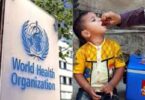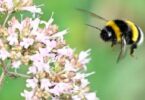KATHMANDU (Agencies): When Saraswati Tamang Karki fell ill with COVID-19 in a small village near Mount Everest, her family had to call on Nepalese soldiers and trekking guides to help take her to the nearest doctor. On June 11, a group of 13 men took turns carrying the 44-year-old on a stretcher, hurrying up and down the narrow and winding dirt paths that lead from the village of Monju to the Pasang Lhamu Nicole Niquille Hospital in the nearby town of Lukla. They made the 15-kilometre (nine-mile) trip in less than four hours, but they were too late. Karki died just before the group reached Lukla.
“We tried our best. But we couldn’t save her,” said Silen Bhotiya, a trekking guide who helped carry Karki. “She was too weak and already on oxygen support.” According to health officials, Karki’s was the fourth confirmed COVID-19 death in the Everest region since late April, when a Norwegian climber seeking to summit the world’s highest peak became the first person to test positive from the area this year. Residents of the remote region worry, however, that many more people could die, as COVID-19 is now ravaging the villages along the trails leading to Mount Everest.
Entire households have fallen sick, but there is a shortage of healthcare workers, hospital beds and testing kits. There are only two rudimentary hospitals and five doctors serving the region’s 9,000 people. About 400 tests have been conducted since late April, of which nearly half have returned positive. “The situation is getting worse every day,” said Bhotiya. “On our way to Lukla, we saw many ill people making the trek to get medical care. Some were riding horses. Some were being carried on others’ backs. We are all afraid after [Karki] passed away.” The worst affected in the latest surge are Lukla, the airport town that acts as the gateway to Mount Everest, and Namche Bazaar, a colourful market town located at 3,440 metres where most trekkers stop to acclimatise before they head higher up into the mountains. But smaller settlements above the tree line are reeling from the virus, too.
Pemba Dorjee Sherpa, a mountaineering guide who has summited Mount Everest nine times, said he tested positive in late May shortly after returning from the main campsite at the peak’s base. “I was having symptoms like cold and mild body aches. Because these symptoms are common in the mountains, I didn’t bother much about it,” he said. The 47-year-old ended up passing on the virus to his wife and two children, who are all now in home isolation in their home in Pangboche, a village five kilometres from the Everest Base Camp. Several members of Pemba’s team have also tested positive, and he said 15 of the 100 houses in Pangboche now have confirmed cases.
“There have not been any deaths so far but there are many people who are having symptoms of coronavirus,” he said. Local health officials believe tourists brought the virus into the region. Nepalese authorities, who had cancelled last year’s climbing season over virus concerns, opened up Mount Everest to climbers again in February this year, issuing a record 408 permits to those seeking to summit the peak and allowing thousands of tourists into the surrounding Khumbu Valley for multi-day treks. “Many of those infected are climbing guides or porters or those who were in close contact with [the tourists],” said Aarti Maya Tamang, health coordinator for the Khumbu Pasanglhamu Rural Municipality. “We believe that the virus came via Everest Base Camp. Our settlements are scattered on the way to the base camp and several people here work in tourism.”
Residents and trekking guides said they had expected some amount of cases in the region with the influx of climbers and hikers, but said it was the Nepalese government’s failure to enforce health protocols that lead to the virus’s spread throughout the area. “The mandatory PCR test to enter Khumbu Valley was not enforced for all expedition teams and trekking groups,” said Lukas Furtenbach of the Austria-based Furtenbach Adventures. “We had to present negative PCR test results to get clearance for our expedition permits, but there were many teams who did not have to follow this procedure.”
Nationals from India, Nepal’s southern neighbour, were also allowed into the Khumbu Valley without PCR tests, Furtenbach alleged, despite a devastating outbreak overwhelming hospitals and crematoriums across the Indian sub-continent. Seven members of Furtenbach’s team at the Everest Base Camp ended up testing positive and he called off his company’s expedition in mid-May. “The Nepalese government should have ended the season, when it was obvious there was a major outbreak in the base camp,” he said. Authorities had initially denied any reports of cases at the campsite and allowed the season to continue, even as the rest of the country went into a hard lockdown on May 6 due to a surge of infections in the capital, Kathmandu – driven by the Delta variant detected in India – that was resulting in shortages of oxygen and ICU beds.
Nepal has now recorded more than 614,000 cases and 8,558 deaths, of which the vast majority were recorded in the past two months. Furtenbach said the government may have allowed the climbing season to continue to protect the local tourism industry. “And that is good … But as per international health norms,” he said, “everyone at the base camp should have been classified as the contact of a positive tested person and placed in quarantine.”
A spokesman for Nepal’s Ministry of Culture, Tourism and Civil Aviation denied allegations of mishandling the outbreak. “We do not have any information about Indian tourists going to the mountain without screening for COVID-19. The protocols were mandatory for everyone,” said Prem Subedi, the ministry’s spokesman. “We tried our best to implement the rules and ensure the safety of the climbers.” He added: “The season was largely successful.”
While Nepalese authorities did order the Everest Base Camp closed to everyone except climbers and support staff following the outbreak there, tourists told Al Jazeera the virus was already spreading – perhaps independently – at the tea houses catering to hiking groups in the wider Khumbu Valley. Subedi said he believed “things will be much better in the next season as vaccination gains momentum across the world”. He added, “It’s still too early, but vaccination might be compulsory for climbers from next season.”
In the Khumbu Valley, residents said the government of caretaker Prime Minister KP Sharma Oli – who recently had parliament dissolved amid a bitter power struggle with a faction of his party – was not doing enough to tackle the current outbreak. “Our main problem is transportation,” said Ram Kumar Tamang, chairman of Phyafulla Tamang Sewa Samaj, a non-governmental organisation in the Everest region. “Since we are not connected with roads, travelling by air is our only option during an emergency. And, you have to charter the flight in emergency cases. It’s impossible for the poor to afford such money. It would be a great relief if the government ensured free or subsidised flights for the poor patients.” After that, the next step, he said, was to increase testing in the Khumbu Valley and vaccinate those most at risk. Otherwise, he said, they may not be able to welcome tourists again in October.
“Tourism is our lifeline. But everything is in a mess right now. All shops, hotels are closed. If things remain this way, I doubt there will be a season in October. People are already worried about unemployment and hunger. Many families are in need of immediate assistance. But the government hasn’t done anything so far. “There is a sense of fear and panic everywhere.”






